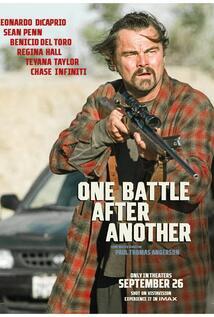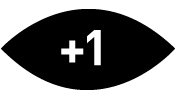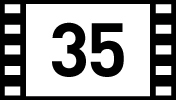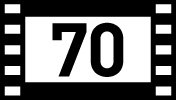

Paul Thomas Anderson's epic political thriller is the most hotly anticipated film of the year. The sprawling action movie was shot in VistaVision and is even playing at a few theaters in its native format. Unfortunately, the film is not the rich tapestry of complex ideas and thrilling action that the early word of mouth would have us believe. I found it quite a shallow and ugly picture. Leonardo DiCaprio stars as Bob, a burnt-out former member of a revolutionary group. Bob went into hiding after the birth of his daughter, Willa, and the capture of his wife, a militant revolutionary named Perfidia Beverly Hills (Teyana Taylor). Sixteen years later, government forces target Bob and Willa, prompting their old network of revolutionaries to attempt a rescue.
As a narrative, there's not much to this 162-minute film; it's more a combination of a vibes movie mixed with an epic chase picture sprinkled with cynical political commentary and dark comedy. Apart from a few questionable needle drops, Jonny Greenwood's relentless piano-plunking score seems to run under the majority of the picture to keep the tension tight. Greenwood's work here is reminiscent of Elliot Goldenthal's bank heist music in Heat by way of the Wicked Witch/Ms Gulch Theme from The Wizard of Oz. For much of its running time, One Battle After Another feels like a three-hour version of the Heat bank heist sequence, yet this is somehow a drawback, not an attribute. Perhaps my lack of engagement was the result of how visually dull this movie is. I can't believe I have to ask this question again, but what is the point of shooting on film in a large format process if everything in your movie would have looked the same had you shot it with a prosumer camcorder? Most of this film consists of bland close-ups and medium shots, many of which are under- or over-exposed; I assume this is intentional, but why? Aside from an exciting and suspenseful car chase climax, the action sequences here are nothing to write home about—just a lot of flash and bang.
The eclectic cast does their best in underwritten roles, but only Sean Penn is able to do much with his part—the villainous Col. Steven J. Lockjaw, who is relentlessly pursuing Bob and Willa in order to further his own personal pursuit. DiCaprio plays Bob in much the same disheveled and constantly overwhelmed way Joaquin Phoenix played the lead in PTA's Inherent Vice, which is perhaps not surprising, given that both films are drawn from Thomas Pynchon novels. DiCaprio's Bob also has shades of The Dude in a higher-stakes version of The Big Lebowski. But, for the most part, this is a one-note performance Xeroxed from other (better) times DiCaprio has played a not-too-smart guy heavily under the influence of substances. It's a character and a performance I'm getting a little tired of. But aside from Willa, played by Chase Infiniti in her film debut, you don't want to spend this much screen time with any of these characters.
In terms of political commentary, for such a long picture ostensibly about contemporary revolutionaries, there is shockingly little explored in terms of how these networks function or, on the flip side, how the government and military intersect with the shady white supremacist cult Penn's character is trying to join. It's a little too easy just to point out that they do intersect—in an absurdly staged sequence involving an elaborate underground luxury bunker beneath a Beverly Hills home. Compare the cursory way revolutionary culture and the intricacies of these networks are depicted here to the ways PTA dramatically and suspensefully explores the ins and outs of the oil business in There Will Be Blood or how he comedically weaves information about the inner workings of the porno industry in Boogie Nights. Watching this movie, I couldn't help but think of how the logistics and complexities of violent activism are handled in the 2022 film How to Blow Up a Pipeline. Granted, that movie was based on a non-fiction, call-to-arms book rather than a postmodern fiction pastiche, but still, a movie coming out these days about revolutionaries has a responsibility to be more substantive, and not just use them as a backdrop for a shaggy suspense thriller about a middle-aged white guy stoner on the run from evil government forces.
The film does redeem itself somewhat in terms of how Bob and Willa are depicted at the end, where the juxtaposition of their two characters' reactions to unrest is spot on. However, it's all too typical of Hollywood to end a movie this way, rather than actually centering the movie on the potentially more interesting character whose story has rarely, if ever, been told on film. One thing I will say for PTA is that at least his political thriller has a perspective, unlike Alex Garland's similarly themed but cowardly neutral Civil War from the previous year. Yet, like Ari Aster's Eddington, which was released a few months earlier, there's a detached quality to the politics of this movie that feels all too safe. It's not that PTA's depiction of revolutionaries and government operatives feels insincere, but his snide humor, narrative focus, and portrayal of violence feel like they come from a writer with no firsthand or even secondhand experience, who has read many books and watched The Battle of Algiers on TV while getting high, as his protagonist does. We don't palpably feel life and death stakes, and that's a major flaw for a movie on this subject.
I'll be surprised if this $130–175M movie becomes the hit it is predicted to be. I do not see a wide appeal, but what do I know? One thing that is patently obvious, though, is that there is nothing in this movie that justifies the big 70mm, IMAX, and VistaVision rollout. Just as I'm growing tired of Leonardo DiCaprio's dim, frantic, stoned or high shtick, and of blockbuster and prestige pictures that center on characters like this, I'm becoming increasingly weary of filmmakers making a big deal about the large-format film processes they're shooting with when they don't utilize these tools to much of an effect. In addition to PTA and cinematographer Michael Bauman's largely pedestrian framing and lighting, the 70mm print I saw was so obviously made off a digital intermediary, with all the inherent noise and artifacts I expect these days from FotoKem lab, that it feels a little silly to be making a big deal about this being presented on film.
Of course, I will watch this movie again, as my city is one of only four in the world that has a cinema screening the picture in actual VistaVision, with a temporarily installed horizontal-thread projector at the Coolidge Corner Theatre. I certainly have thrilled at a few films shot recently in large formats, like The Hatefull Eight, Dunkirk, and The Brutalist, but after making the effort to seek out the best celuloid presentations of Phantom Thread and Licorice Pizza, Interstellar and Oppenheimer, Nope and Sinners, I think it's time we started to refer to some of these large-format releases as what they are: an expensive gimmick that bears little resemblance to what these processess were designed for and what they are truly capable of.
PTA's shaggy yet tense combination of vibes movie and epic chase picture sprinkled with side-eyed political commentary and dark comedy. Pointlessly shot in VistaVision.






